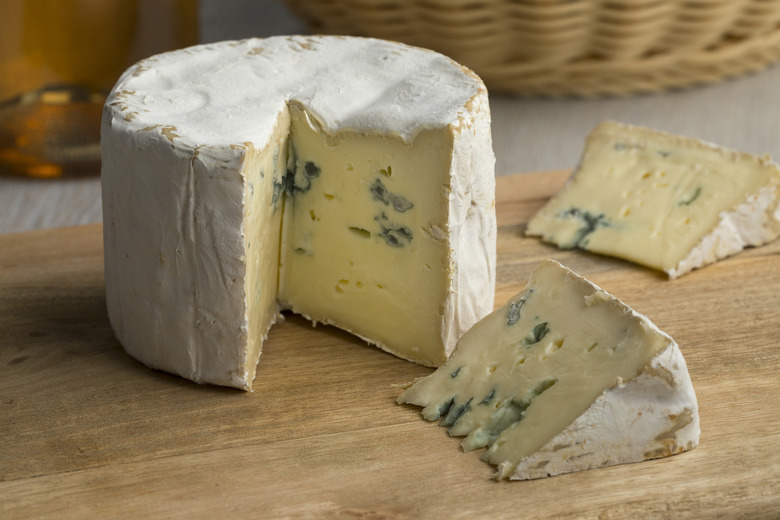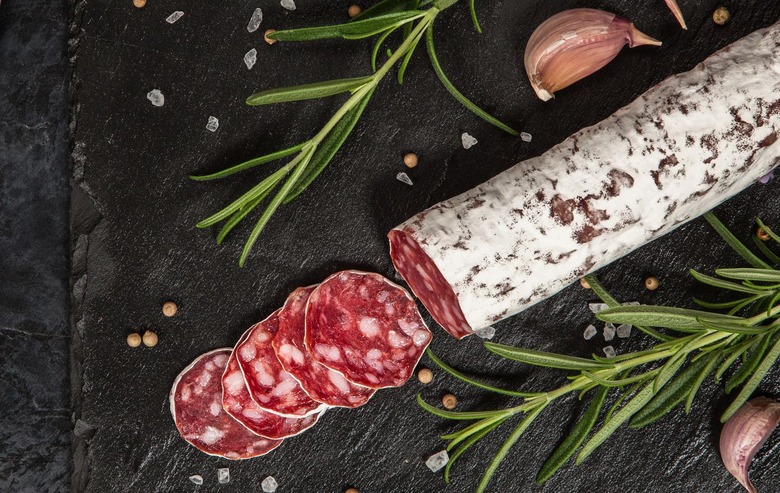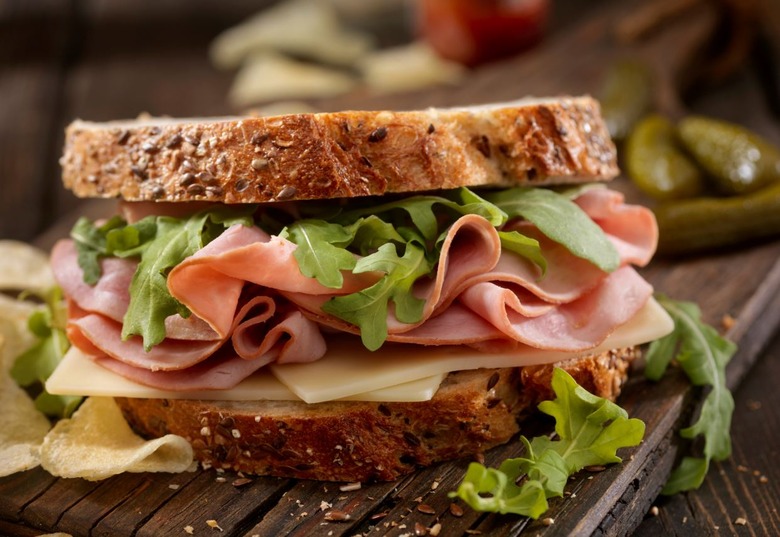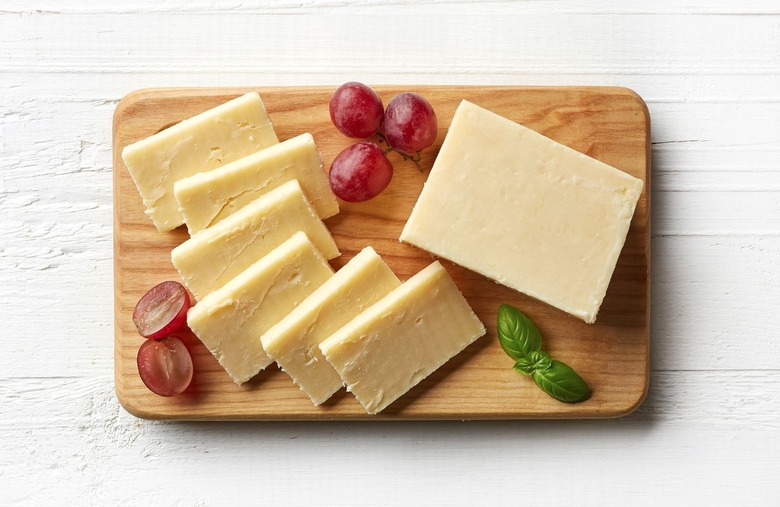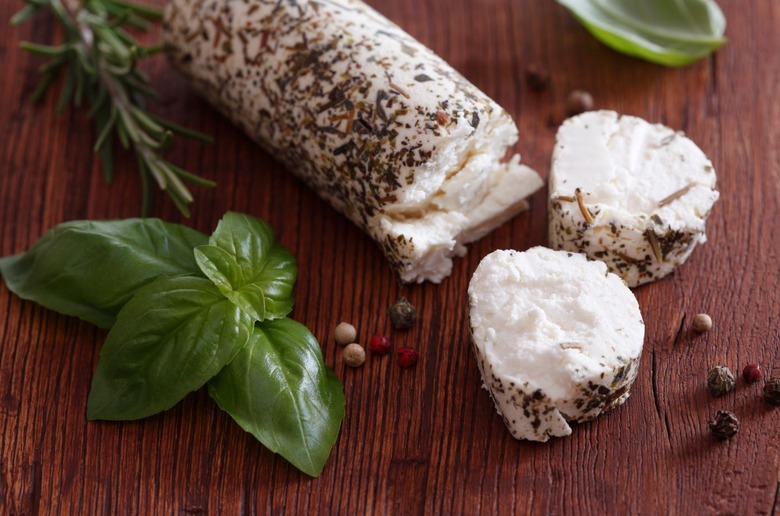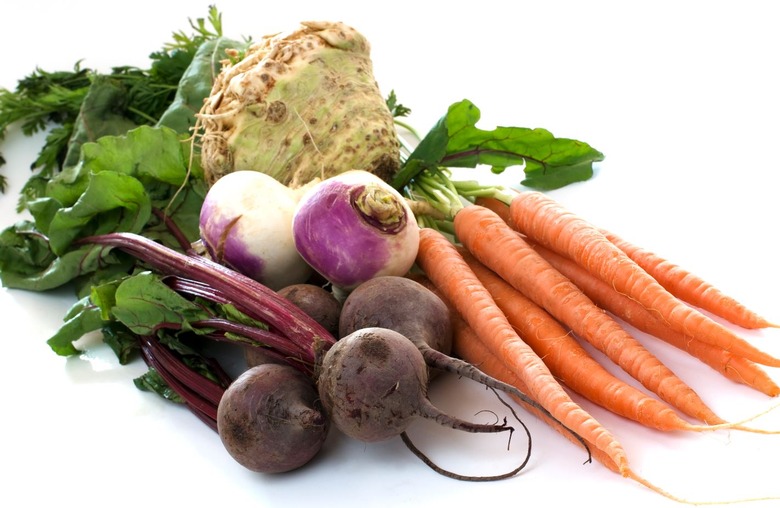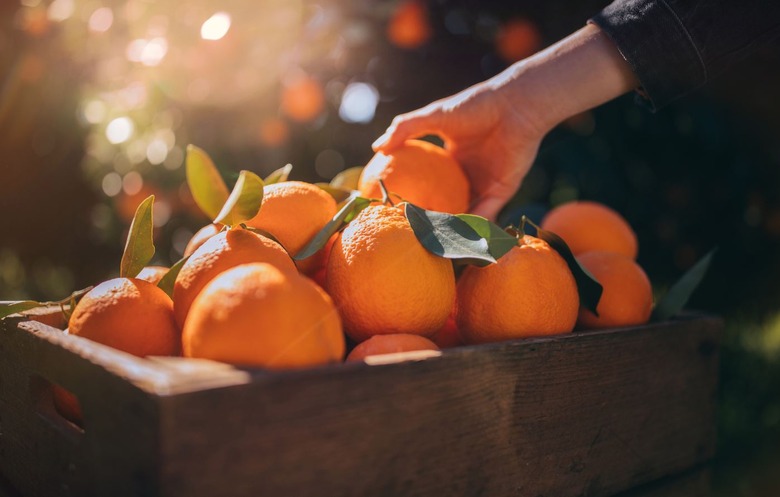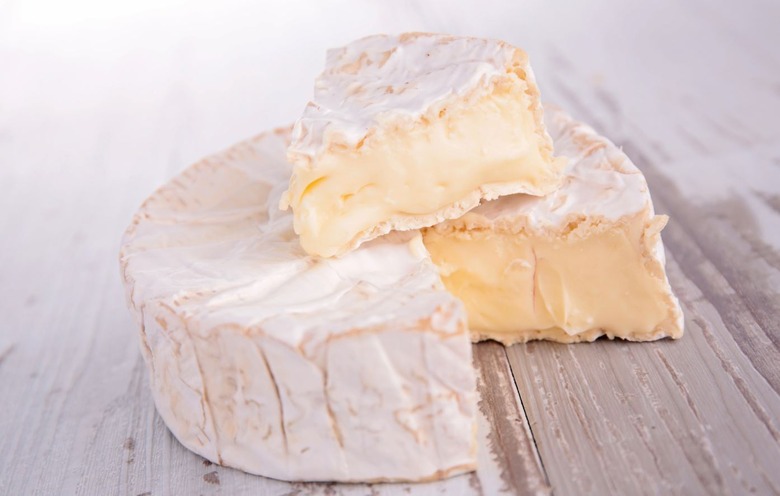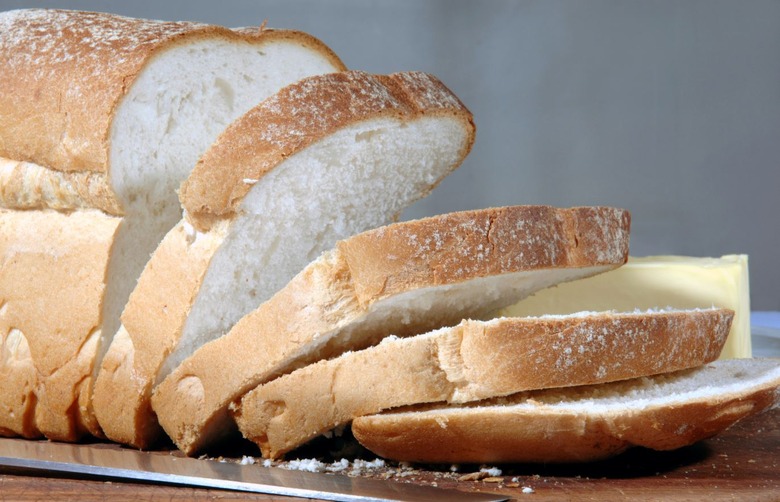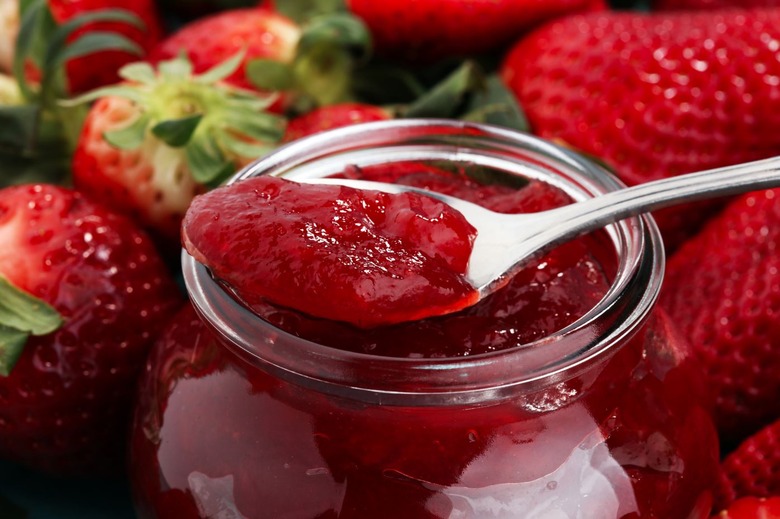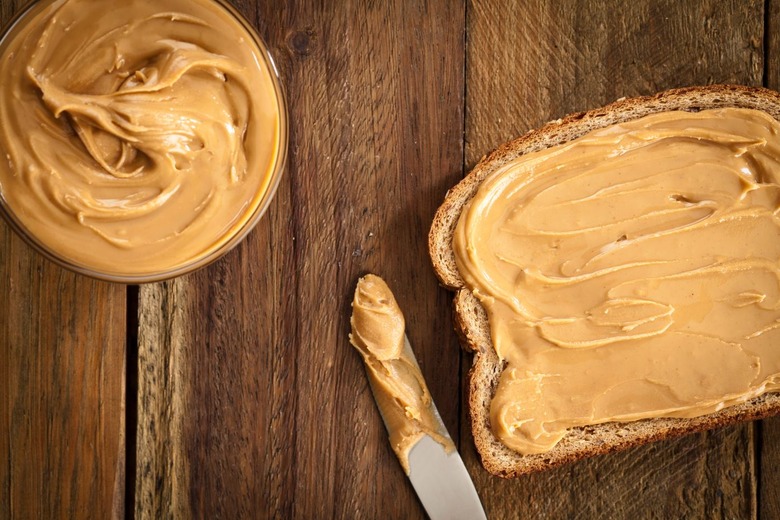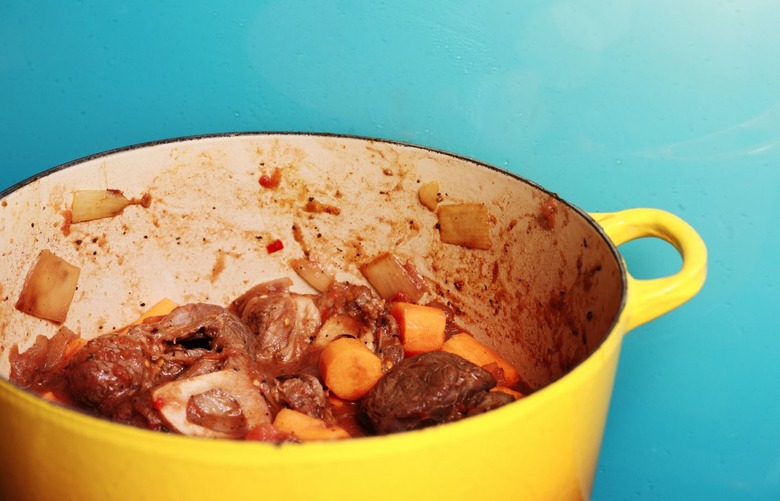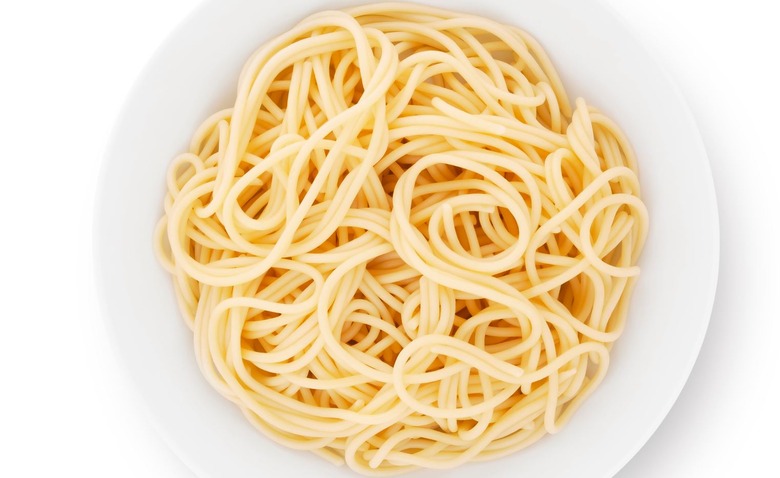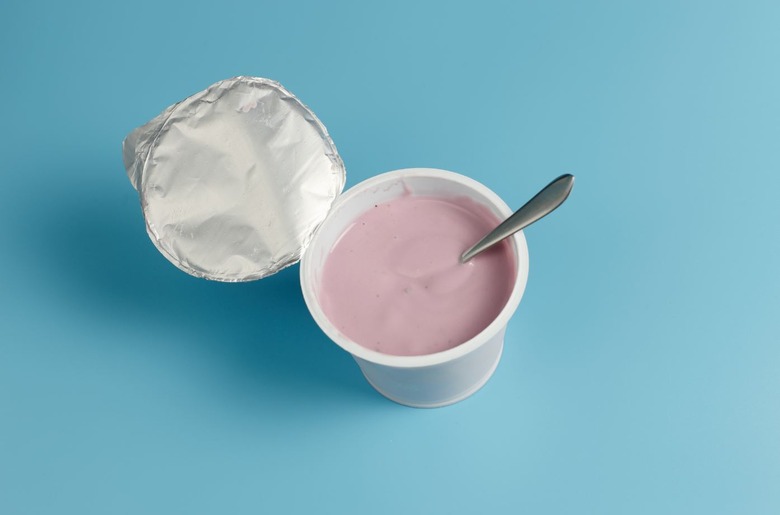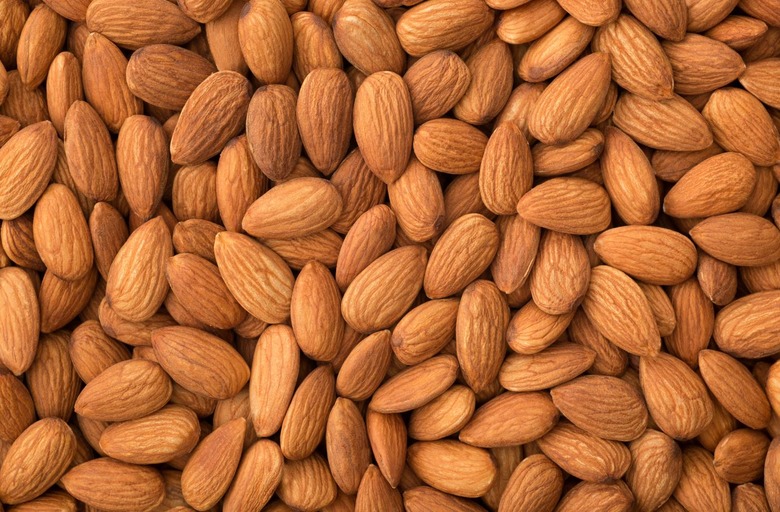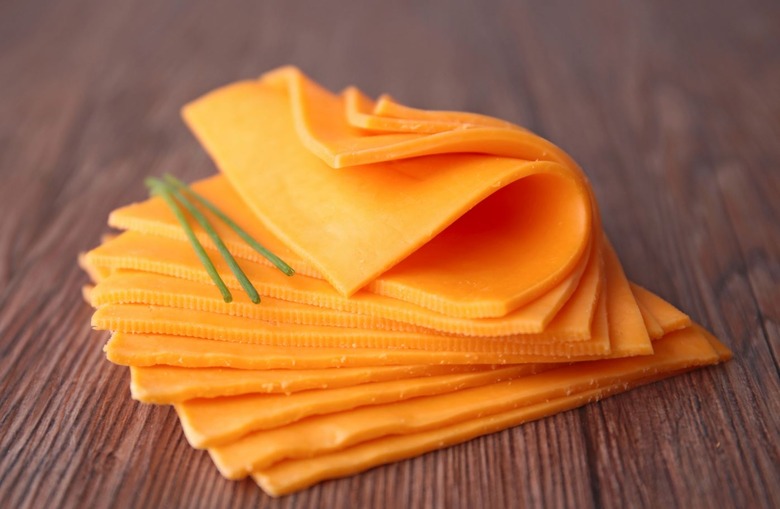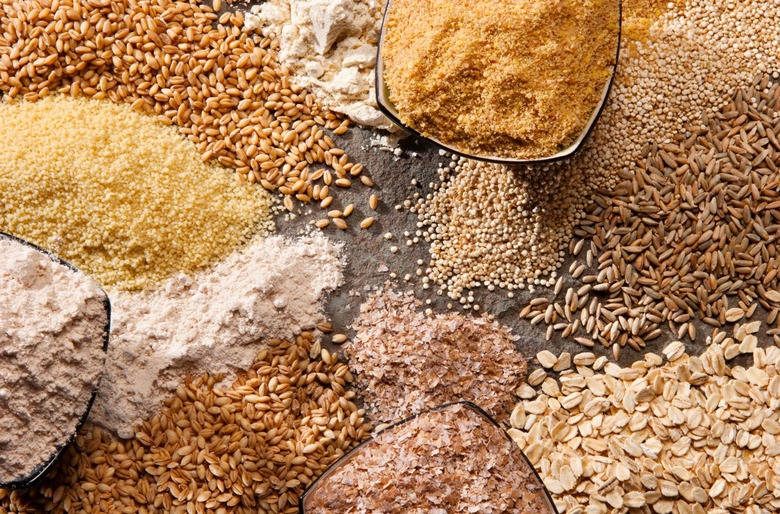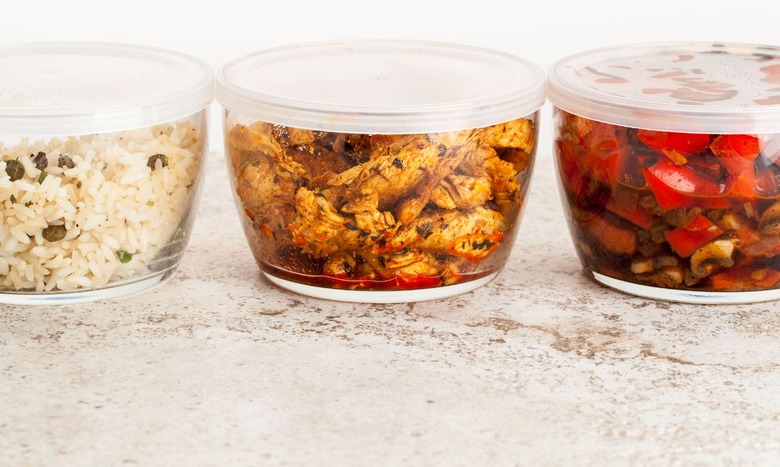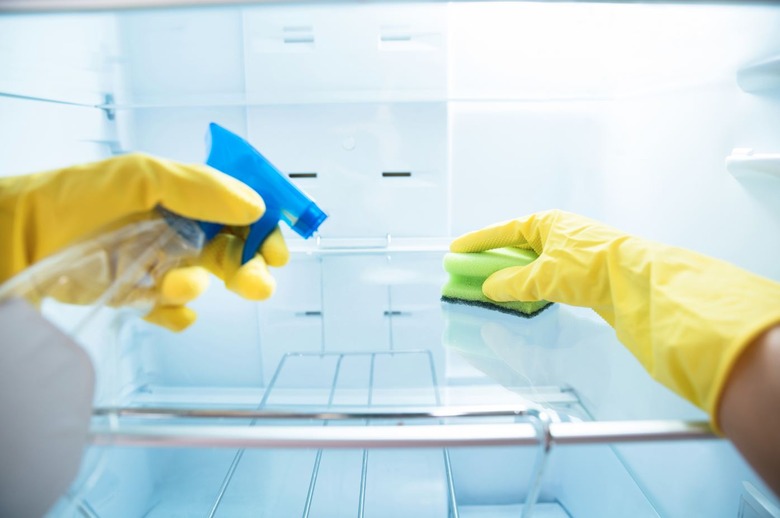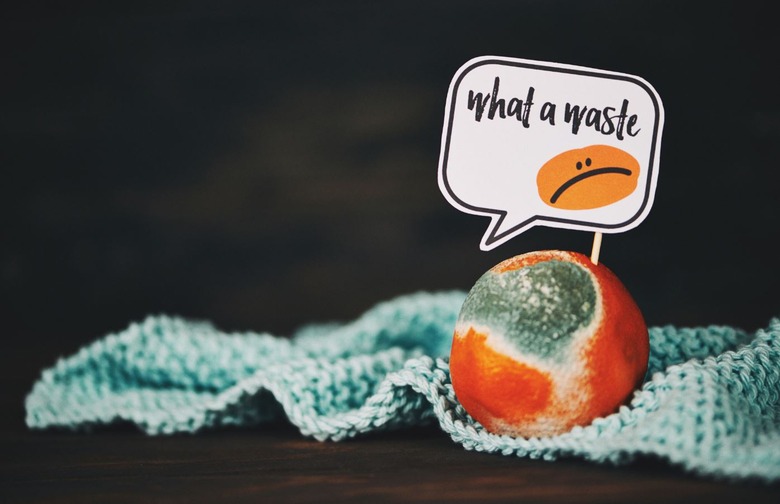It's Actually OK To Eat These Foods If They're Moldy (But Not These)
In the world of food, mold is both a blessing and a curse. Without mold, we'd have no Camembert, dry-aged steaks or artisanal salami. But because of mold, we've had to throw out a lot more food than we care to admit. But if you encounter a little bit of mold on a food item that's otherwise perfectly edible, does it always need to be immediately thrown out?
Molds are microscopic fungi, and under a microscope they look like very skinny mushrooms. Mold isn't always dangerous; after all, penicillin is derived from a type of mold. But some molds can cause respiratory problems when inhaled, and some can be downright poisonous when eaten. And in most cases, removing visible mold doesn't make something edible; mold can grow invisible roots that can work their way deep into food.
Even though most foods should be thrown out as soon as you notice mold on them, there are a handful of foods that the USDA deems safe for consumption after the visible mold has been removed.
Safe: Hard salami and dry-cured ham
It's normal for these foods, which are shelf-stable, to have a little surface mold. Be sure to scrub it off before eating.
Unsafe: Cold cuts and hot dogs
Mold loves damp, salty foods, making lunch meats and hot dogs prime contenders. If you've got moldy baloney, toss it out.
Safe: Hard cheese
Hard cheeses, like Parmesan, cheddar and Swiss, are firm enough that any mold that appears on the surface is unable to penetrate into it. Cut off all the visible mold, as well as an inch around and below it (making sure that the knife doesn't make contact with the mold itself) before eating, and use a fresh wrapper.
Unsafe: Soft cheese
If you see mold on soft cheeses like cottage cheese, ricotta or goat cheese, throw it away.
Safe: Firm fruits and vegetables
Like hard cheeses, firm fruits and vegetables like carrots, root vegetables, and cabbage are generally too dense tor mold to penetrate beyond the surface. So same deal here: Cut away an inch around the mold, and don't let the knife cross-contaminate it.
Unsafe: Soft fruits and vegetables
If you notice any mold growing on your citrus fruits, tomatoes, peaches, cucumbers or other soft fruits, toss them, along with any fruits that might have come into contact with them in the bag.
Safe: Cheeses made with mold
Blue cheeses and bloomy-rind cheeses like brie and Camembert are made with safe mold as a part of the production process, so these are obviously safe to eat (you can even eat the rind if you feel so inclined). But if you notice mold growing where it's not supposed to be, remember the firm/soft rule: If the cheese is firm (like Gorgonzola), cut it out; if it's soft (like brie), throw it out.
Unsafe: Bread and baked goods
It may be tempting to just pluck off that piece of mold from that burger bun, but because bread is porous, even a small amount of surface mold can mean an invisible infestation. We hate to break it to you, but if you see a little mold, you need to toss it, and it's probably smart to toss the whole package away too.
Unsafe: Jams and jellies
Mold that grows on jams and jellies is especially dangerous, because it could contain poisonous mycotoxins. If you notice any mold growing in your jam, throw away the whole container.
Unsafe: Peanut butter
It may seem tempting to just scoop mold out of the peanut butter jar, but its roots could extend far beyond where the naked eye can see. Throw out the whole jar.
Unsafe: Leftovers
If any of your leftover food contains even the smallest amount of mold, throw the whole thing away.
Unsafe: Cooked pasta
Pasta is cheap. If you notice a little mold, throw it out and cook another batch.
Unsafe: Dairy products
Yogurt, cream cheese, sour cream... If you encounter any mold growing on soft dairy products, even if it's just on the top, throw it out.
Unsafe: Nuts
One moldy nut can spoil the whole bag.
Unsafe: Sliced or shredded cheese
Cheddar may be a firm cheese, but if it's sliced or shredded and starting to grow mold, throw the entire package out.
Unsafe: Grains
Whole grains like quinoa, farro, and wheatberries can easily start to get moldy if left in the wrong conditions, so make sure to inspect them before cooking.
How to protect your food from mold
In order to minimize the risk of your food growing mold, the USDA advises you keep it out of warm, humid environments, and always keep open food covered to prevent it from attracting airborne mold spores. Don't leave any perishable foods out of the refrigerator for more than a couple hours, and use leftovers within a few days.
How to control mold growth
Every few months, scrub the inside of your refrigerator with a tablespoon of baking soda mixed with a quart of water. If you see any visible mold, scrub it off with three teaspoons of bleach in a quart of water. Keep the humidity in your house below 40 percent, and be sure to dry off any towels, mops and sponges after use.
If you see moldy food
If you encounter moldy food, don't sniff it! You can inhale spores, which could cause respiratory problems. And don't just toss it directly into the garbage can; children and animals can still get to it, and it can still be releasing spores. Wrap it in plastic first, and make sure the garbage can is covered. Then clean the area around where the food was stored, and check surrounding food to make sure that the mold hasn't spread. When it comes to mold, it's much better to be safe than sorry; avoiding mold is just one of many ways to avoid food poisoning.
More from The Daily Meal:
These Are the Dirtiest Places in Your Kitchen
21 Things You Should Never Eat on an Airplane
17 Signs You're in a Dirty Restaurant
The Best Foods for Healthy, Glowing Skin
You've Been Defrosting Your Food All Wrong — Here's How to Do It Right
